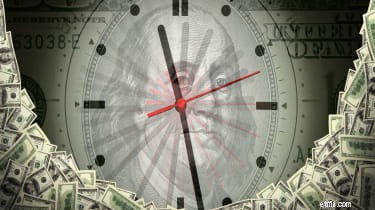
John D. Rockefeller는 "나에게 기쁨을 주는 유일한 것은 배당금이 들어오는 것을 보는 것"이라고 말했습니다. 소득 투자자는 역사상 가장 부유한 미국인보다 더 충만한 감정적 삶을 살기를 희망하지만 록펠러와 마찬가지로 배당금의 장기적인 힘을 이해해야 합니다.
지난 반세기 동안 최고의 주식을 살펴보십시오. 아주 특별한 경우를 제외하고 모든 경우에 배당 소득은 장기적으로 우수한 수익을 창출하는 데 매우 중요했습니다.
S&P Dow Jones Indices는 최근 Standard &Poor's 500 지수에서 지난 50년 동안 최고의 수익률을 기록한 25개 종목의 목록을 발표했습니다. 가격 상승만으로도 이러한 주식 중 다수는 압도적인 연간 수익률을 제공했습니다.
그러나 총 수익 기준(가격 상승 + 배당금)에서 이 주식은 더 넓은 시장을 날려버렸습니다. 지난 50년 동안 S&P 500은 9.5%의 배당금을 포함한 연간 수익을 창출했습니다. 지난 반세기 동안 최고의 주식이 창출한 수익률에 비하면 그것은 땅콩에 불과합니다.
지난 50년 동안 최고의 주식을 살펴보면 워렌 버핏이 아닌 한(힌트, 힌트) 장기 투자자는 아마도 록펠러처럼 배당금을 갈망해야 한다는 것을 알게 될 것입니다.
달리 명시되지 않는 한 데이터는 2019년 1월 4일 기준입니다. 배당수익률은 가장 최근의 분기별 배당금을 연간 환산하고 주가로 나누어 계산합니다. S&P Dow Jones Indices에서 제공한 역사적 연간 수익률. Zacks Investment Research에서 제공한 애널리스트 등급
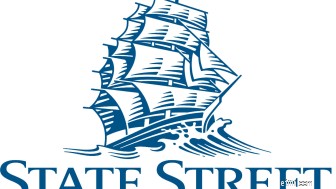
스테이트 스트리트 (STT, $64.19)는 BlackRock(BLK) 및 Vanguard에 이어 세계에서 세 번째로 큰 자산 운용사로, 운용 자산은 $2.8조입니다. 보스턴에 본사를 둔 이 회사는 SPDR 상장지수펀드(ETF)의 긴 목록으로 가장 잘 알려져 있습니다. 실제로 SPDR S&P 500 ETF(SPY)는 자산(2,433억 달러)과 일평균 거래량(1억 3,180만 달러) 면에서 모두 시장에서 가장 큰 ETF입니다.
회사의 뿌리는 1700년대 후반으로 거슬러 올라가며 1891년에 State Street Deposit &Trust Co.로 운영되기 시작했습니다. 다른 금융 서비스 산업과 마찬가지로 SST는 지난 50년 동안 거의 영구적인 변화 상태에서 인수, 처분 및 기타 거래의 현기증 나는 기록. 이 모든 과정에서 회사는 거의 13.7%의 연간 총 수익률을 달성했습니다.
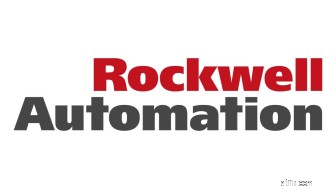
로크웰 오토메이션 (한국, $150.13) 기업이 공장 자동화에 사용하는 소프트웨어와 장비를 제조 및 개발합니다. 가장 최근에 회사는 "사물 인터넷"의 리더가 되었습니다. 이더넷 지원 Logix 시스템은 공장 현장에서 온라인으로 시스템에 액세스하는 관리자에게 데이터 수집, 모니터링 및 분석을 제공합니다.
회사의 뿌리는 1903년으로 거슬러 올라가지만 실제로는 1990년대에 Rockwell Software, 앞서 언급한 Logix 제어 플랫폼 및 통합 아키텍처 시스템을 출시하면서 소프트웨어 사업에 뛰어들면서 현재의 형태를 갖추었습니다. 2002년에 회사는 Rockwell Collins(COL) 항공 전자 사업부를 분사했습니다.
한국의 배당금 역사는 수십 년으로 거슬러 올라가며 2010년 이후 매년 평균 14%씩 배당금을 인상했습니다. 이러한 소득 흐름은 지난 50년 동안 주식의 연간 총 수익률에 거의 7% 포인트를 추가하는 데 도움이 되었습니다.

보잉 (BA, $327.08) 1987년부터 Dow 구성요소인 대형 상업용 여객기의 독점권의 절반을 형성합니다. 유럽의 에어버스(EADSY)만이 대형 제트기 제작에 있어 대등한 경쟁을 펼치고 있습니다.
그러나 보잉은 단순한 상업용 항공기 그 이상입니다. 이 회사는 로켓에서 위성, 그리고 Osprey와 같은 군용 틸트 로터 항공기에 이르기까지 모든 것을 제조하는 주요 방위 산업체입니다. 보잉의 역사는 100년 전으로 거슬러 올라갑니다. 하지만 실제로는 2차 세계 대전 이후 상업용 항공기의 폭발적인 성장과 함께 그 자체로 자리를 잡았습니다.
보잉의 배당 성장 행진은 길지 않고 2012년으로 거슬러 올라갑니다. 그러나 항공 우주 대기업은 20년 이상 동안 중단 없이 배당금을 지급했습니다. 이 빅 블루칩은 지난 50년 동안 최고의 주식 중 하나일 뿐만 아니라 역대 최고의 주식 중 하나입니다.

Equifax (EFX, $94.25) Experian(EXPGY) 및 TransUnion(TRU)과 함께 3대 소비자 신용 보고 기관 중 하나인 이 회사는 최근 잘못된 이유로 주로 뉴스에 나왔습니다. 2017년에 회사는 해커가 거의 1억 4,600만 소비자의 개인 데이터에 액세스했다고 밝혔습니다. 도난당한 정보에는 이름, 사회 보장 번호, 생년월일, 주소 및 운전 면허증 번호가 포함되었습니다. 작년에 이 회사는 240만 명의 소비자가 데이터 유출의 영향을 받았다는 사실을 추가로 발견했다고 밝혔습니다.
스캔들 속에서 잃어버린 것은 EFX 주식이 장기 투자자들에게 꾸준한 아웃퍼포머였다는 사실입니다. 수십 년간의 배당금과 7년 연속 배당금 성장은 수익을 높이는 데 도움이 되었습니다.
애널리스트들은 주로 EFX의 향후 전망에 대해 낙관적입니다. Zacks가 설문 조사한 12명의 분석가 중 7명은 "강력 매수", 4명은 "보유", 1명은 "매도"라고 평가했습니다.
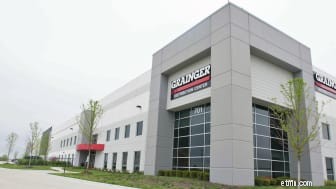
W.W. 그레인저 (GWW, $279.13) 꾸준히 증가하는 배당금에 관한 것입니다. 실제로 이 회사는 S&P Dividend Aristocrats(최소 25년 연속으로 매년 배당금을 인상한 주식)에 속합니다.
Grainger는 섹시한 사업을 하지 않습니다. 산업 장비 및 도구를 판매하고 기업의 재고 관리 지원과 같은 기타 서비스를 제공합니다. 하지만 꾸준한 편입니다. Thomson Reuters의 데이터에 따르면 2019년 수익은 6.3%로 예상됩니다. 한편, 수익은 향후 5년 동안 연평균 거의 14%의 속도로 성장할 것으로 예상됩니다.
소득을 중시하는 투자자에게 가장 중요한 것은 Grainger가 46년 동안 매년 배당금을 인상해 왔다는 점입니다.

1935년에 설립된 Tyson Foods (TSN, $55.16)은 닭고기, 쇠고기 및 돼지고기의 세계 2위 생산업체로 성장했습니다. 회사의 포트폴리오에는 동명의 제품 외에도 Jimmy Dean, Hillshire Farm, Sara Lee, Ball Park, Wright Brand, Aidells 및 State Fair와 같은 브랜드가 포함됩니다.
수년 동안 회사 성장의 대부분은 인수를 통해 촉진되었습니다. 가장 최근인 2018년 8월 Tyson은 패스트푸드 산업에 단백질을 공급하는 Keystone Foods를 22억 달러에 인수한다고 발표했습니다. 실제로 맥도날드(MCD)를 치킨 너겟의 고객으로 간주합니다.
수십 년간의 배당금과 꾸준히 상승하는 주가 덕분에 TSN은 지난 50년 동안 연간 14% 이상의 총 수익률을 달성할 수 있었습니다.

홀리프론티어 (HFC, $51.72) 5개 주에서 운영되는 정유 회사의 뿌리는 1947년으로 거슬러 올라갑니다. 2011년 Holly Corporation과 Frontier Oil의 합병으로 현대적인 모습을 갖추게 되었습니다.
50년 전으로 거슬러 올라가는 원래 기업의 주주들은 스스로를 위해 잘 해왔습니다. 주식은 배당금을 고려하면 연간 총 수익률이 14% 이상입니다. 애널리스트들은 유가의 약세로 단기적으로는 냉정합니다. Zacks가 설문 조사한 9명의 분석가 중 1명은 HFC를 "매수"하고 6명은 "보류" 상태입니다. 나머지 2개는 "매도"로 요율을 적용합니다.

Illinois Tool Works (ITW, $127.18) 지난 50년 동안 최고의 주식 목록을 만든 또 다른 배당금 귀족입니다.
1912년에 설립된 ITW는 건설 제품, 자동차 부품, 레스토랑 장비 등을 제조합니다. ITW는 동명의 브랜드로 많은 제품을 판매하지만 Foster Refrigerators, ACME Packaging Systems 및 Wolf Range Company를 비롯한 사업도 운영하고 있습니다.
무역 전쟁에 대한 두려움, 달러 강세, 글로벌 성장에 대한 우려로 인해 일부 분석가는 단기적으로 이 이름에 더 신중을 기했습니다. Zacks가 설문 조사한 13명의 분석가 중 4명은 ITW를 "강력 매수", 7명은 "보유", 2명은 "강력 매도"라고 말했습니다.
Illinois Tool Works는 2018년 8월 배당금을 28% 인상했다고 발표했는데 이는 회사의 55년 연속 배당금 인상에 도움이 됩니다.

미국 방코프 (USB, $46.83)는 미국 최대의 지역 은행이며, 역사상 가장 위대한 가치 투자자를 따르는 사람이라면 그 오랜 실적을 보면 놀랄 일이 아닙니다.
Berkshire Hathaway(BRK.B)의 CEO이자 회장인 Warren Buffett은 USB에 대한 회사의 지분을 꾸준히 늘려왔습니다. Oracle of Omaha는 3분기 동안 자산 기준으로 미국에서 다섯 번째로 큰 은행의 980만 주를 추가로 사들였습니다. Berkshire Hathaway는 전체 발행 주식의 7.7%를 보유한 U.S. Bancorp의 최대 주주입니다.
U.S. Bancorp는 2011년부터 매년 배당금을 인상해 왔습니다.

셔윈-윌리엄스 (SHW, $390.47) Dividend Aristocrat은 야망을 잃지 않은 오랜 기간 동안 실적이 우수한 기업입니다.
2017년 회사는 Valspar를 110억 달러에 인수하여 세계에서 가장 큰 페인트, 코팅 및 주택 개조 회사 중 하나를 만들었습니다. 거래의 이점은 이미 결과로 나타나고 있습니다. Thomson Reuters에 따르면 분석가들은 올해 매출이 거의 18% 증가할 것으로 예상합니다. 수입은 향후 5년간 연평균 18%씩 증가할 것으로 예상됩니다.
회사는 1979년부터 매년 배당금을 인상해 왔습니다. 그리고 Sherwin-Williams가 Valspar 거래에 자금을 조달하기 위해 60억 달러의 채권을 발행했지만 투자자들은 회사의 배당금 인상에 대해 걱정할 필요가 없습니다. SHW는 수익의 18%에 불과한 배당금을 지급하여 부채를 상환할 수 있는 충분한 자원을 제공합니다.
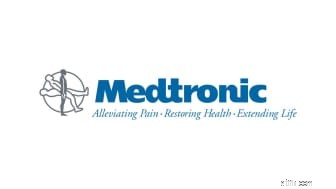
TJX 회사 (TJX, $45.40) 배당금을 인상하는 할인 소매 체인의 인내심 있는 투자자들에게 많은 돈이 있음을 증명합니다.
1957년에 설립된 TJX는 TJ Maxx, HomeGoods, Marshalls 및 Sierra Trading Post와 같은 오프 프라이스 체인점으로 구성되어 있습니다. 이 회사는 1997년으로 거슬러 올라가는 배당 성장 기록을 가지고 있습니다.
전자 상거래의 부상으로 인해 소매 종말이 진행 중인 경우 TJX는 메모를 받지 못한 것 같습니다. Thomson Reuters의 데이터에 따르면 분석가들은 향후 5년간 수입이 연평균 11.4% 증가할 것으로 예상합니다.
과거의 실적이 미래의 수익을 보장하지는 않지만 지난 50년 동안 TJX의 연간 총 수익률은 14.35%라는 사실을 알 수 있습니다.

미국 또는 기타 160여 개국에 있는 병원, 진료소 또는 의사의 진료실을 둘러보면 Medtronic의를 볼 수 있는 좋은 기회가 있습니다. (MDT, $88.13) 제품. 결국, 당뇨병 환자를 위한 인슐린 펌프에서 심장 외과 의사가 사용하는 스텐트에 이르기까지 다양한 제품에 대해 4,600개 이상의 특허를 보유한 세계 최대 의료 기기 제조업체 중 하나입니다.
1949년에 설립된 Medtronic은 일련의 거래를 통해 수년간 성장했습니다. 2014년에 429억 달러에 코비디엔을 인수하면서 크게 도약했습니다.
회사는 주주와 환자의 건강에 중점을 두고 있습니다. Medtronic은 40년 동안 매년 배당금을 꾸준히 증가시켜 왔습니다.

Walgreens Boots Alliance (WBA, $69.57) 그 뿌리는 1901년에 설립된 단일 약국으로 거슬러 올라가며, 그 이후로 먼 길을 왔습니다. 2014년 스위스에 기반을 둔 다국적 헬스 앤 뷰티 다국적 기업인 Alliance Boots와 합병하여 현재의 회사가 되었습니다. 2017년 말에 1,932개의 Rite Aid(RAD) 매장을 43억 8,000만 달러에 구매하는 계약을 체결했습니다.
오늘날 WBA는 CVS Health(CVS)에 이어 두 번째로 큰 약국 체인입니다. 그러나 월스트리트의 명성 면에서 두 번째 바이올린 역할을 하는 경우는 거의 없습니다. In June 2018, the company replaced General Electric (GE) in the Dow Jones Industrial Average, an elite list of just 30 blue-chip firms.
Walgreens also is a member of the Dividend Aristocrats, having boosted its dividend every year since 1972.

Income investors should raise a glass to Brown-Forman (BF.B, $47.06). Yet another Dividend Aristocrat, BF.B proves that steady and rising dividends really add up over time.
Brown-Forman is one of the largest producers and distributors of alcohol in the world. Jack Daniel’s Tennessee whiskey and Finlandia vodka are just two of its best-known brands. Tequila sales – Brown-Forman features the Herradura and El Jimador brands, among others – also help fuel growth. By share price alone, BF.B delivered an annualized return of 11.53% over the past 50 years.
That’s not bad at all, but it’s the dividends that really make the difference. The company has raised its payout annually for 35 years and has delivered an uninterrupted regular payout for 73 years. In November, it hiked the annual payout by 5.1%. Add it all up, and BF.B’s annualized total return comes to nearly 14.5% over the past half-century.
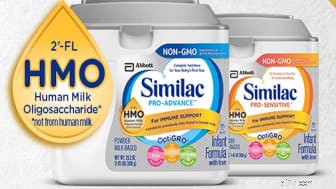
Abbott Laboratories (ABT, $68.11) has undergone a number of changes over the decades to deliver outperformance.
Among the most dramatic developments? Abbott in 2013 spun off biopharmaceutical company AbbVie (ABBV) to focus on branded generic drugs, medical devices, nutrition and diagnostic products. Some of Abbott’s better-known products include the likes of Similac infant formulas, Glucerna diabetes management products and i-Stat diagnostics devices.
The company has been expanding by acquisition since then, including medical-device firm St. Jude Medical and rapid-testing technology business Alere, both snapped up in 2017.
Abbott, which dates back to 1888, first paid a dividend in 1924. It has raised its payout for 47 straight years. The steady increases have added more than four percentage points to ABT’s total annualized return over the past half-century.
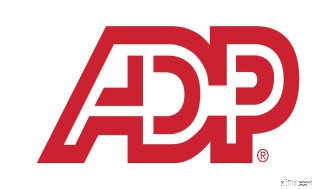
Automatic Data Processing (ADP, $131.24) is the world’s largest payroll processing firm, responsible for paying more than 39 million employees and serving more than 650,000 clients across more than 110 countries.
One of ADP’s great advantages is its “stickiness.” It’s difficult and expensive for corporate customers to change payroll service providers. That competitive advantage helps throw off consistent income and cash flow. In turn, ADP has become a dependable dividend payer – one that has provided an annual raise for shareholders since 1975.
And, yes, it also happens to be a Dividend Aristocrat. Notice the trend here?

Hormel (HRL, $41.70), yet another Dividend Aristocrat, is about as reliable as they come when it comes to income investing. The packaged food company best known for Spam has raised its annual payout every year for more than five decades.
Indeed, in November, Hormel announced its 53rd consecutive annual dividend increase – a 12% raise to 84 cents a share. The payment, to be made Feb. 15 to shareholders of record as of Jan. 14, will be the 362nd consecutive quarterly dividend paid by the company. Hormel is rightly proud to note that it has paid a regular quarterly dividend without interruption since becoming a public company in 1928.
It’s a heck of a track record, and helps explains how a seemingly modest purveyor of luncheon meat could become one of the best S&P 500 stocks of the past 50 years.

VF Corp. (VFC, $71.63) is an apparel company with a large number of brands under its umbrella, including Lee and Wrangler jeans and The North Face outdoor products. It added to its brand portfolio with the acquisition of Icebreaker Holdings – another outdoor and sport designer – under undisclosed terms in April 2018.
Analysts expect average annual earnings growth of 13.5% for the next five years, according to data from Thomson Reuters. In November, VFC announced a quarterly dividend increased of 11% to 51 cents a share.
Suffice to say, VFC’s streak of annual payout hikes, which stretches back to 1973 and has added several percentage points to its annualized total returns, appears safe.
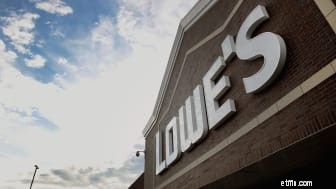
When it comes to home improvement chains, Home Depot (HD), a member of the Dow Jones Industrial Average, gets all the glory, but No. 2 rival Lowe’s (LOW, $93.87) has actually delivered superior long-term total returns.
You can chalk at least some of that up to the rising dividend. Like so many other names on this list, Lowe’s has been raising its dividend annually for a loooong time. Lowe’s has paid a dividend every quarter since going public in 1961, and that dividend has increased annually for more than half a century. Home Depot is also a longtime dividend payer, but its string of annual dividend increases only dates back to 2009.
Analysts are bullish on Lowe’s more immediate prospects – 19 out of 23 surveyed by Zacks say it’s a “Strong Buy” or “Buy” – and long-term income investors already know how remunerative the holding has been.

맥도날드 (MCD, $178.28) is a dividend – and total return – machine. The world’s largest hamburger chain’s dividend dates back to 1976 has has gone up every year ever since. That has helped earn MCD a place in the S&P Dividend Aristocrats. Given the power of its global brand, there’s little wonder that it’s a component of the Dow Jones Industrial Average too.
Changing consumers taste will always be a risk, but from the Atkins craze of the early 2000s to the current fetish for fresher ingredients, McDonald’s has always managed to maintain its edge. Over the years it has added salads to its menu, rolled out all-day breakfast and now touts never-frozen beef.
That sort of flexibility, and rising dividends, have been key to its market-beating returns over the long haul. Analysts polled by Zacks remain bullish on the name in the shorter term too.

Who would have guessed that Aflac (AFL, $44.92), the supplemental insurance company popularized by the loud, obnoxious Aflac duck, would make the list of top stocks?
Followers of the Dividend Aristocrats, that’s who. Aflac, whose roots go back to 1955, has a number of workplace offerings, such as accident, short-term disability and life insurance. But what makes AFL exciting to long-term income investors is the fact that it has raised its payout every year for more than three decades.
The company’s stock started 2018 year in horrific fashion after a report of alleged fraud sent shares into a dive. But the stock recovered after evidence of wrongdoing failed to materialize. Indeed, over the past 52 weeks, AFL is essentially flat, vs. a decline of roughly 6% for the S%P 500.
Analysts at Janney Montgomery Scott, who rate shares at “Buy,” say the company “has a significantly simpler business profile with a more reliable stream of earnings than its life insurance peers, and has shown an inflection point in the sale of its benefits products both in Japan and the U.S.”

Years of stagnant wage growth and widening income inequality have fueled tremendous growth in the number of dollar stores in the U.S., and few have done as well as Dollar General (DG, $108.77)
For 2007, Dollar General reported total revenue of $9.2 billion. A decade later, revenue swelled to $22 billion. Analysts expect the company’s 15,227 stores in 44 states to generate sales of $27.5 billion next year. Earnings are forecast to increase at an average annual rate of 14% for the next five years.
The company was founded in 1939 and changed its name to Dollar General in 1968.
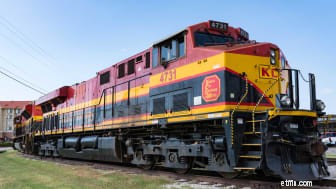
About as old-economy a company as you can get, Kansas City Southern (KSU, $96.90), a railroad that dates back to 1887, has been a total return champion over the past 50 years.
Its primary holding is The Kansas City Southern Railway, which operates in the central and southern U.S. The company also has holdings in railways in Mexico and Panama. Taken together, the company boasts the ability to ship freight virtually anywhere in North America.
KSU has a five-year track record of dividend growth, and with a payout ratio of just 24%, has room to keep raising the payout in the future. Of the 13 analysts tracked by Zacks, nine call KSU stock a “Strong Buy,” while four have it at “Hold.”

Sin stocks can be good long-term holdings. Just look at Altria (MO, $50.30), which also happens to be one of the best stocks of all time. Note that dividends have added more than 8 percentage points to its annualized total return over the past 50 years.
Altria’s origins can be traced back to a 19th century tobacco shop in London. Today, the company’s operating businesses continue to focus on tobacco including cigarettes (Philip Morris USA), smokeless tobacco (U.S. Smokeless Tobacco) and cigars (John Middleton). Altria also owns St. Michelle Wine Estates, a major wine producer. The company is best known for its iconic Marlboro brand of cigarettes, but at one time or another Altria and its predecessors had a hand in other famous names including Miller Brewing and Kraft Foods.
The stock originally joined the Dow in 1985, when the company was called Philip Morris Cos. The name changed to Altria in 2003, and the stock was replaced in the Dow in 2008. Philip Morris International (PMI) is a separate publicly traded company that was spun off from Altria in 2008 to sell cigarettes outside the U.S.

Need any more proof that Warren Buffett is the greatest long-term investor of all time? Berkshire Hathaway (BRK.B, $195.20), of which he is chairman and CEO, tops the list of the best S&P 500 stocks of the past 50 years, and it is the only one that does not pay a dividend.
Berkshire Hathaway is almost famous, perhaps even notorious, for eschewing dividends, even though many of Buffett’s coveted positions are in dividend-yielding stocks. But that makes sense when Buffett is calling the shots. Sure, Berkshire could give some cash back to shareholders for a few percentage points of extra return. But surely the greatest value investor in history can do better by shareholders by deploying that capital in something more productive.
Berkshire Hathaway’s 50-year annualized total return of nearly 20% is pretty persuasive evidence that Buffett has been right not to pay dividends all these years. What happens once the Oracle is gone is an argument for another day.
Howard Silverblatt, S&P Dow Jones Indices senior index analyst, notes that although dividends count over time, Warren Buffett is the exception. A theoretical $10,000 investment at the end of 1968 would now be worth $85 million, he notes.